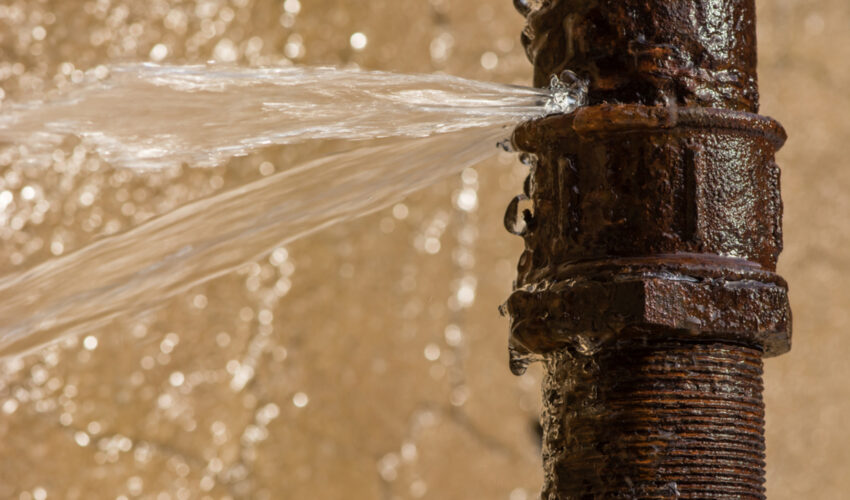The wear and tear of time can impact some of your home’s most essential features, including your water lines. If you’ve noticed changes in your water pressure, frequent leaks, or even occasional orange debris in your household water, your water lines may be starting to show their age. If a pipe gives way, it could cause extensive damage to your home, lawn, and furnishings.
Learn more about signs of aging water lines and what you should know about replacing them.
Signs of Aging Water Lines
Regardless of the type of material your water lines are made up of, some of the most common signs of trouble include:
- Irregularity in water pressure across the water fixtures in your home
- Frequent leaking from your pipes
- Orange debris in your water
Water pressure irregularity can stem from a few different sources, including mineral deposits and buildup in aging pipes, sloppy repairs, or undetected leaks. You may find that the water pressure in one part of your house is fine, while another water fixture “downstream” from a leak or mineral deposit has much lower pressure.
Frequent leaking is most commonly a problem in older metal pipes—those made from copper or iron. Although copper is a long-lasting building material, exposure to any contaminants (including chemicals and corrosive materials) can significantly shorten its lifespan. You may find that as soon as you fix one leak in a copper pipe, another one will develop. A leaking pipe can be expensive to repair, especially if it’s caused damage to flooring, furniture, or your home’s foundation.
Orange debris in your water generally stems from the deterioration of iron pipes—essentially, rust. Iron pipes haven’t been used in home construction since the mid-1960s and come with a slew of issues when they’re used to distribute water throughout the home: leaks, scale buildup, and iron rust leaching into the water. Because of this, replacement is recommended. Note that certain iron pipes are acceptable, such as galvanized (iron) pipe, commonly used to stub out through the wall, connected to brass fittings right on the other side. If you begin to see orange debris in your water, your pipes have probably aged beyond repair.
How Can You Fix Aging Water Lines?
Once past the point of repair, the only remedy for aging pipes is to replace them. Generally, when you repipe an entire house, you’ll need to do it from the attic for houses on slabs, or from the crawlspace beneath the house. Drywall removal may be necessary if pipes running through the walls must be replaced.
Repiping the water lines in a house can take days to weeks, and the water must be shut off the entire time plumbers are working. Many homeowners find it’s easiest to temporarily move out to expedite the process and avoid discomfort. Repiping is never a DIY project, as you’ll need proper permits for repiping and too much can go wrong without proper plumbing experience.
What Pipe Should You Repipe Your House With?
You generally have three options when it comes to repiping your house: copper, PEX, and PVC.
Copper
Copper pipe is still used in home construction, but it is a more expensive option than PEX or PVC, costs more to repair, and is also more vulnerable to corrosion. Still, if your budget permits, copper remains a viable option.
PEX (Cross-Linked Polyethylene)
PEX has been common in U.S. homes since the early 2000s, and is much more cost-efficient than copper. Unlike copper, PEX has the ability to expand and contract, allowing it to survive freeze/thaw cycles unscathed. PEX pipes can also have a distribution valve located somewhere in the house, which can be used to shut off water to certain areas. This is great for diagnosing leaks or controlling water flow if you have a leak in one room and don’t want to shut off water to the whole house.
PVC / CPVC (Polyvinyl Chloride)
PVC is a synthetic polymer of plastic and, unlike PEX, can be used underground. However, PVC is less reliable, less practical, and more expensive than PEX, so if you’re debating between the two for indoor water lines, PEX is the clear winner. You can also opt to use PVC for service lines from the water meter to the house tie-in, then use PEX for the rest.
Conclusion
If you’re worried about your aging pipes, or just want a professional to take a look at your home’s water lines, give North East Air Conditioning, Heating, and Plumbing a call. Our experienced plumbers can work with you to assess any issues and find a solution that fits your needs and budget. Visit our website today to learn more about the services we offer or to make an appointment.


